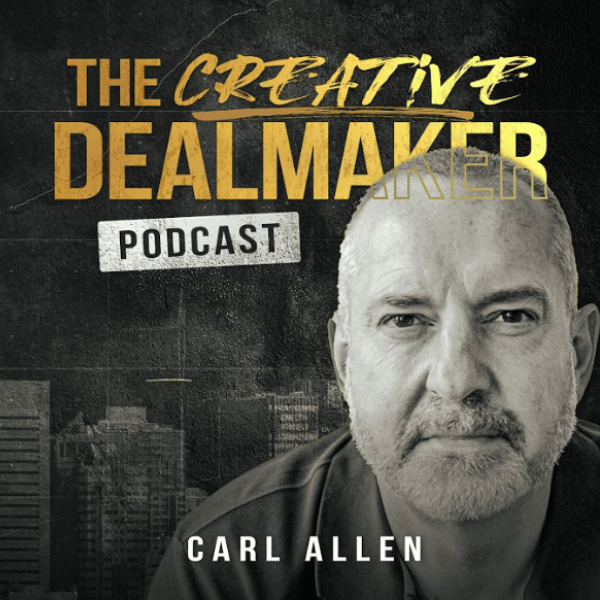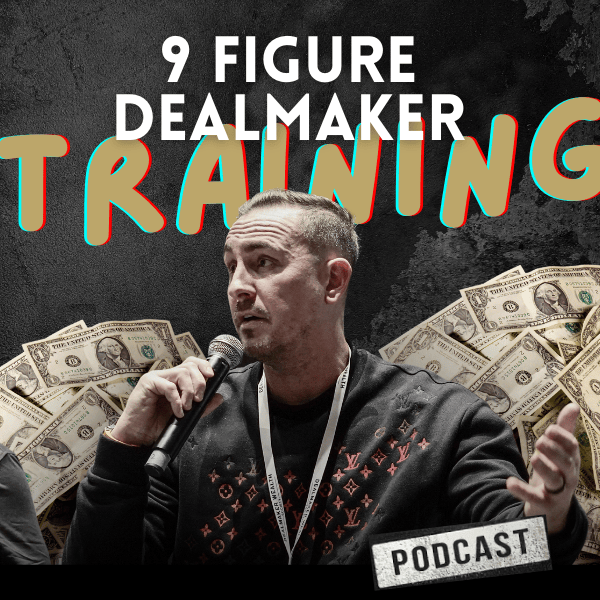How to Make Offers Sellers Can’t Turn Down
How to Make Offers Sellers Can’t Turn Down

On Monday, I walked you through my offer sequencing strategy…
If you didn’t catch the video, try to watch it now — being several steps ahead of a seller is a key part of my strategy for making and negotiating offers.
We will get deep into HOW to negotiate on Friday when I lay out my 5-6-7 blueprint to create a win-win offer and deal structure.
But today I want to hone in on the actual offer submission process, and my time-tested strategies navigating it.
First, your written offer is NOT the same as a letter of intent (LOI). The LOI is a more formal document that not only sets out the terms of the deal once it’s been agreed upon between you and the seller… but it also handles a number of other factors that serve as the basis for the final purchase agreement.
The offer letter, on the other hand, is designed simply to get an agreement on the valuation and deal structure. In an equity deal, this will include:
- The percentage of the shares you’re buying
- The structure and terms of the deal
- How much cash you’re paying at closing
- How much of the total price will be paid via seller financing (i.e., deferred consideration)
- The terms of the seller financing contract.
Now, when you’re ready to submit the offer I want you to remember THREE key things:
1) Submit the offer in writing via snail mail, or create a PDF and email it. If there’s a broker involved in the deal, it’s customary to send it to the broker and copy the seller.
You can also pitch your offer in person. While it can be a great way to strengthen your relationship with the seller, you’ll benefit from being able to read the seller’s body language as 93% of all communication is non-verbal.
If an in-person pitch isn’t an option due to COVID restrictions or geographic distance, don’t worry. Mail is just fine.
2) Make your offer time bound. At MOST, give the seller seven days to respond.
It’s possible either the seller or broker will come back and decline your initial offer without countering. NEVER go back with another offer until and unless you have a counter.
This is CRITICAL to remember — otherwise you’ll just be negotiating against yourself.
Once they counter, you may be anxious to reply… but WAIT at least three days. This will affect the seller’s psychology as they’ll be wondering where your head is at.
3) Make your FIRST offer on a Monday or a Friday — both can give you strategic advantage.
Sending it on a late Friday afternoon will make the seller dwell on it ALL weekend. Let’s say the seller sees it and thinks, “That doesn’t get it done.” But if they’re motivated — been thinking about retirement, bored, tired, maybe even sick — and the offer has been playing in their mind all weekend, they may be more ready to make it work.
For similar reasons, Mondays also work. After an AMAZING weekend, the seller may dread the Monday morning commute and the FIVE long, hard days before their NEXT break.
Then boom, your offer drops in. It makes the seller shift psychologically even if it’s not exactly what they were hoping for. Sometimes it will be accepted; other times negotiated. But don’t under-estimate the power of timing on offers.
Let’s look at an example…
Say you are buying the following business:
Revenue = $1,000,000
Profit = $150,000 (15% margin)
Multiple = 3X
EV = $450,000
Adjustments = $50,000 (surplus cash less debt)
100% Share Value = $500,000
So we think this business is worth $500K. But I always like to make my opening offer between 70%-80% of the valuation.
In this case, let’s assume you make an opening offer of $400K: $200K to be paid in cash at closing and $200K in seller financing over four years.
If the seller comes back and declines it, you need them to make a counter offer — do NOT make another offer without one.
The seller may want $500K for the business, with least $300K of it in cash at closing.
Now you’re in business. You know the price and terms to get it done.
But remember… Don’t go back immediately.
I want you to WAIT at least THREE days. Let the seller sweat a little. Make them think you are circling back with your financing partners, remodeling the deal, etc.
In reality you won’t be, assuming you have done the offer sequencing work… because you already know the next five steps in your offer sequence.
So three days later your second offer may be $500K total consideration, but you stick to your original closing payment amount. So now the deal is $200K at closing, plus $300K in seller financing.
Your message will be, “I’m in agreement on the total deal value, but I can’t stretch to $300K at closing. For $500K, it needs to be structured in this way.”
The seller may then counter again and now you’re in a true negotiation.
As long as you stick to your offer sequence and the strategies, I laid out above, you should be able to get to a win-win deal… most of the time.
Every now and again a seller is just not as motivated or sensible as you thought they would be.
In those cases, walk away. Don’t get deal heat. As long as you’ve been originating deals continuously, you can move on knowing there’s something better out there waiting for you.
So that’s how to make offers.
Stay tuned for later this week when I walk you through my full 5-6-7 negotiation blueprint.
Until then, bye for now.
















